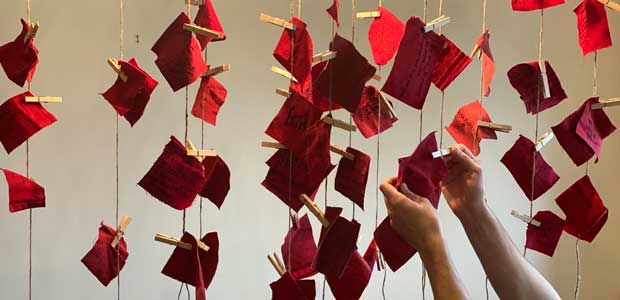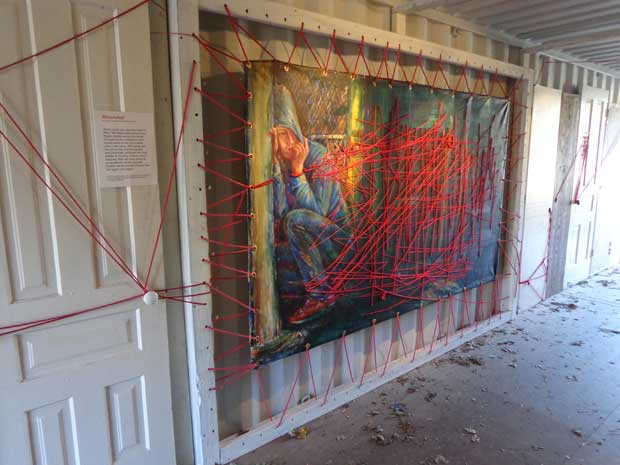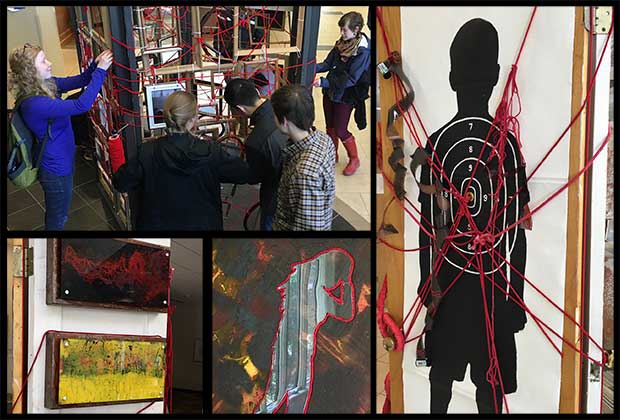Redemptive Art

The catalytic response from visitors surrounding my ArtPrize work caught the attention of the internationally known artist Makoto Fujimura. In 2014, Mako wrote, “Pamela Alderman’s installation The Scarlet Cord at the Ford Presidential Museum is attracting thousands. Her work of paintings combined with participatory, Yoko Ono-like installations hit home, and the lines for her exhibit grew longer every day. What Pamela experienced, and what ArtPrize made possible, is an extraordinary success by any measure.”
Through Mako’s insights, I have continued to expand my work, which taps into the healing power of art to help individuals flourish. He also helped me hone my creative interests and messaging. Mako’s contribution has made a major difference in my community-based art by helping the work to advance beyond ArtPrize.
Before meeting Mako, I had packed away my paint brushes for fifteen years. Instead of art, it was a time for spiritual grounding, while learning how to apply positive life principles in everyday ways to benefit others. Now, as an artist, I’m using what I learned then to support friends, neighbors, and strangers through my redemptive art.
Robert Schumann, a German composer, said an artist’s duty is “to send light into the darkness of men’s hearts.” As an artist of the soul, I’m learning how to cultivate exhibits that focus on empathy and compassion. Such work addresses our universal brokenness, but it also reflects a bit of my own story.
At thirty-four, I found out the most powerful man I knew had suddenly died. Enormous grief pulled me out to sea like a riptide. Wasn’t I too young to bury my father?
After my dad’s death, I finally realized I had this white-knuckled grip on how I wanted my life to work out; I wanted a storybook family that goes sailing on Sunday afternoons. My childhood dream capsized, though, when my parents divorced and my family broke apart. I found myself drowning in the deep water, trying to control the wreckage and stay afloat. Those pain-saturated decades, the parts I can talk about and the parts I can’t, seep out through my art.
Whether it’s attaching a scrap of red jeans to help raise awareness for sex trafficking, or releasing a personal struggle by writing a “let go” statement, or writing a note to a veteran coping with PTSD, military sexual assault, or veteran suicide—elements of a future 2020 work—each installation creates a nurturing space that invites hope. Because of my past pain, I believe art has a unique potential to touch the deep places within the human spirit, and interactive art, especially art that offers healing, draws people into a place of restoration.


